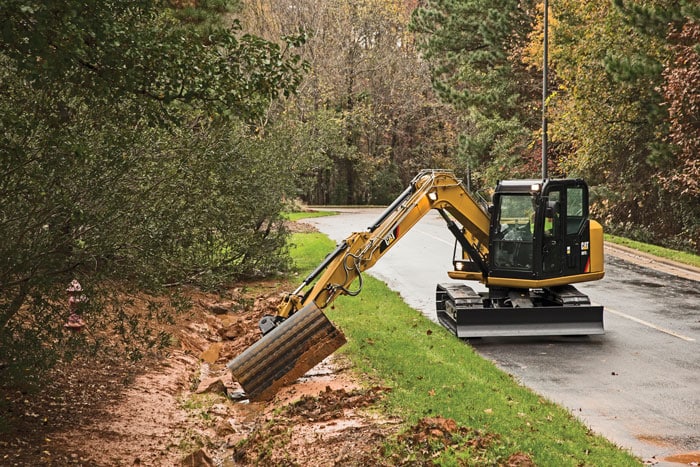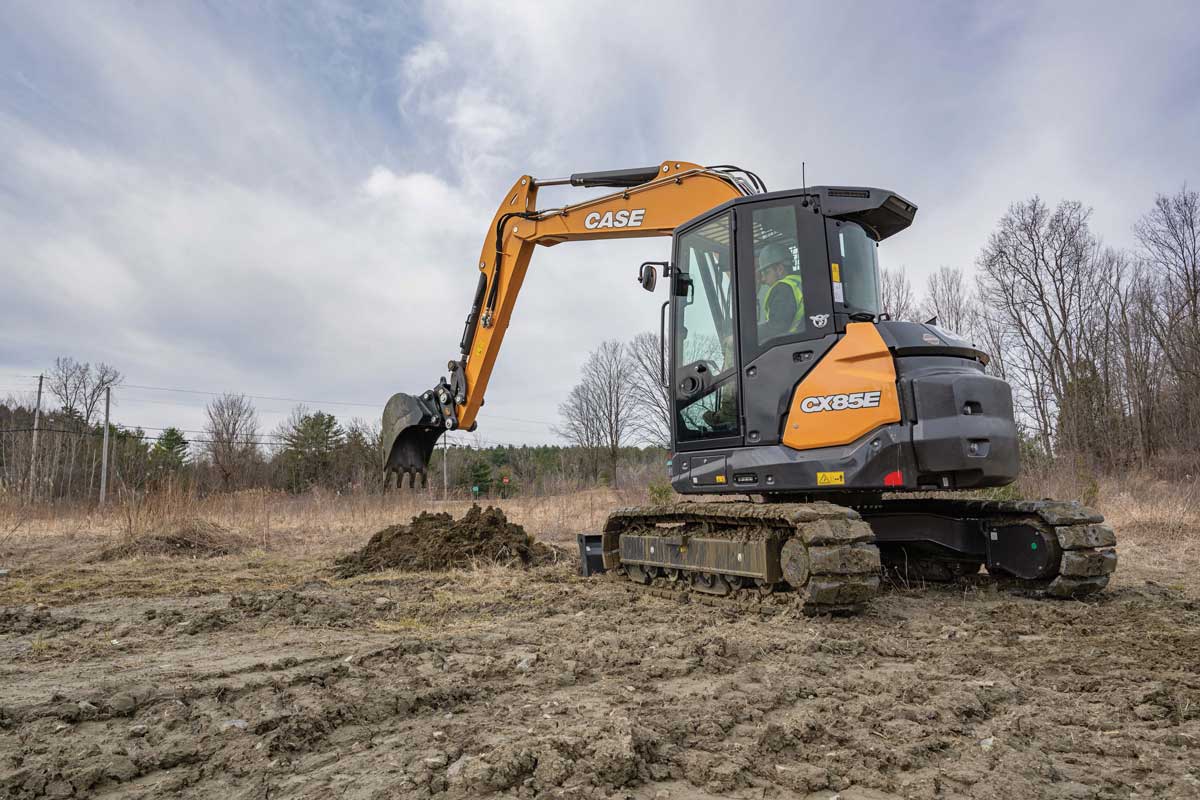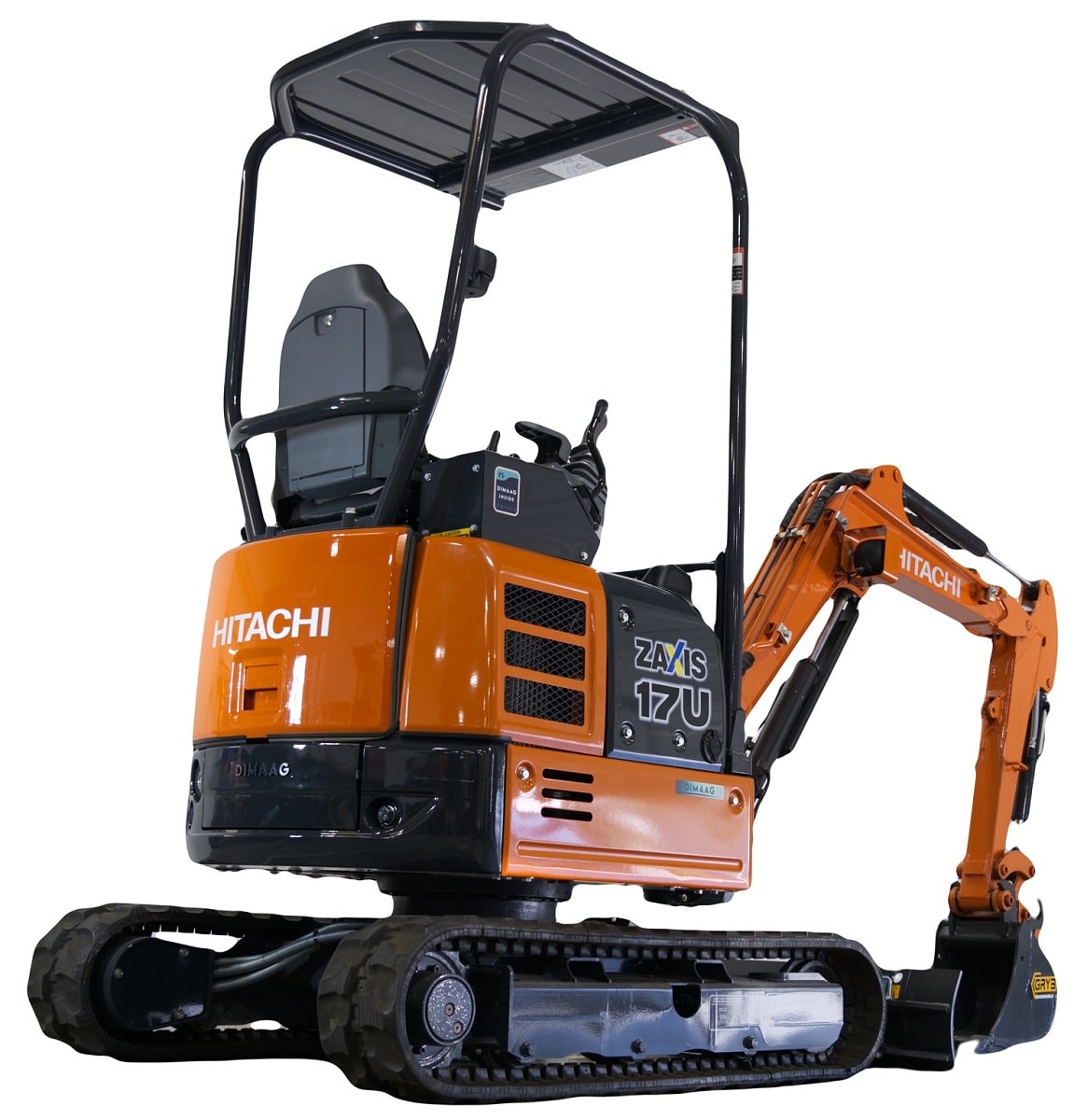The Ultimate 2016 Compact Excavator Market Watch
Excavation is only the beginning. Small diggers like compact excavators have an entire playbook of operations. Demolition. Brush cutting. Augering. Compaction. Picking and placing with precision. Did we mention digging? The compact or mini excavator (a European and Japanese-raised machine category) has earned an increasingly popular reputation in America through its size and utility. In fact, the compact excavator sector is one of the most competitive areas of the global construction equipment market, worth an estimated $5.85 billion annually. More than 20 major manufacturers compete for this valuable business, and with almost 200,000 sold worldwide each year, it might be the single largest sector of the annual 700,000-unit construction equipment market.
But what about the U.S. market? We’re a little late to the mini excavator party, but the category for small excavator tool carriers in America has steadily grown over the last two decades.
“We believe the [2016] market will be about the same size as 2015 turned out to be, near 30,000 units,” says Paul Manger, product marketing director with Kubota CE (the market leader with 11 models today). “Rental is going to continue to be a strong and important segment though total rental did shrink from nearly 40 percent of all sales in 2014 to 36 percent of all sales in 2015. Still, it’s a large and important segment.”
Along with rental, hot construction markets are also attracting these nimble diggers. The housing market is always a good barometer for sales of small, off-highway equipment.
“In many areas of the country, housing starts are steadily increasing while some specific areas are seeing aggressive homebuilding action. This is a key determining factor for any compact equipment, including excavators, because with residential construction comes the need for infrastructure like roads, utilities and schools,” explains David Steger, national product manager with Takeuchi (whose excavator line includes eight models). “Additionally, it creates opportunities for other trades like landscaping, plumbing and site prep.”
As the right markets grow (rental, housing and others like agriculture and utility work) manufacturers are seeing a lot of potential for U.S. mini excavator sales, and they have created a lot of great products to serve it. And we mean a lot — as in Bobcat, JCB, John Deere, Caterpillar, Kobelco, Terex, Takeuchi, Kubota, Case, New Holland, Yanmar and beyond often have up to 10 units each, plus or minus. These mobile excavators are going into an assortment of applications, digging basements, burying downspout lines, installing electrical service, trenching service lines, augering holes for trees or grappling obscenely big, decorative rocks. The very first thing a buyer or renter must determine is application.
“Reflection is the best advice I can give,” says Steger. “Reflect on how you have used machines in the past, what your current needs are and where you want to develop and expand your business. From there, you can determine your transportation and attachment requirements.”
Go Operate Some Units

Popular mini ex specs include: operating weight, digging depth, bucket breakout force and maximum reach.
Compact excavators are competitively judged on lots of criteria. Popular mini ex specs include: operating weight, digging depth, bucket breakout force and maximum reach. There are a slew of features that make certain models unique or pedestrian, ranging from six-way dozer blades and quick-attach mounting systems to high-tech digital control panels and keyless start.
“Basically, seek a machine that meets your requirements in dig depth, reach craning, power, attachment versatility, etc., while staying in the smallest package possible,” suggests Greg Worley, senior project engineer for Caterpillar global mini hydraulic excavators. Caterpillar is also a U.S. market leader in small excavator sales. “Pretty much Kubota and Cat have half of the market,” says Worley. “All the rest of the competition is vying for the other half.”
Brand is an important decision, but there’s a lot more to buying an excavator. A great way to experience multiple units is to rent machines from a local dealer. Operate a variety of units. Step onto the house structure of each compact excavator, which contains the operator’s compartment and get a feel for its comfort and utility. Are the controls intuitive? Is there enough space to stay comfortable for 10 hours? Is entry and exit quick and uncomplicated?
“Buyers or renters of compact excavators have many details to consider,” explains Tim Boulds, Kubota CE product operations manager. “Because of this, sometimes certain important features that offer a lot of long-term value can be missed. Protected cylinder hoses are a great example. It is not a stand-out feature that buyers tend to notice first, but the protection of cylinder hoses is critical for machine longevity. Ease of maintenance is another important point to consider. Buyers should carefully inspect engine layout to ensure that access to various components is convenient.”
Easy maintenance equals more production time. When evaluating said production time, be sure to work both the boom and backfill blade to determine the smoothness, accuracy and featherability of a unit’s joysticks and their control patterns. Ensure that switching from pilot controls to the traditional backhoe configurations (ISO to SAE) is simple (this writer is old and prefers backhoe pattern). Jump off and kick the rubber on the undercarriage, inspecting the tracks, drive sprockets, rollers and idlers. Do you need steel tracks or maybe even a wheeled unit? Those might be available — though often in larger models. For added digging depth, choose a compact excavator with long-arm or extendable arm options; normal dig depths can range from 5- to 20- plus ft. Also ask about the diesel engine and hydraulic systems under the hood. It’s changed quite a bit in the last few years.
“Efficiency is helping compact excavators to evolve and progress,” explains Steger. “Efficiency in engines is partially a result of emissions regulations. Fuel efficiency and varying work modes are also driving factors as are environmental noise concerns. Hydraulic efficiency is a result of improved system designs which are capable of higher pressure, increased cooling and optimized use of the available oil flow. The lower engine horsepower found in some machines has also created a need to do more with less, making more efficient hydraulics a requirement.”
High-tech hydraulics fuel attachments, and that’s a large part of a compact excavator’s success. A mini excavator’s hydraulic system specifications — gpm and psi — will help determine the size and power of attachments available.
Depending on the excavator model, attachments range from general purpose and grading buckets to rock wheels, augers, hammers and thumbs. In order to run attachments like augers and grapples, excavators can be plumbed with two-way hydraulics. While it’s certainly important to offer a wide range of compact excavator attachment options, it’s also imperative for manufacturers to make it fast and easy to switch out those attachments on the jobsite. Many manufacturers offer a quick-hitch attachment system.
“The fundamental decision to be made on whether to implement a quick-hitch depends upon the end use of that machine,” says Jordan Dey, compact product specialist for JCB North America. “A standard hitch provides the customer with a front end that’s dedicated to using one specific attachment. Its direct mount will provide better breakout forces and drive more power through the attachment. The alternative to this is to take a quick-attach option, which allows the machine to become more adaptable and versatile.”
The Latest Trends
Profitability has always been about getting the most productivity from the smallest equipment that can get the work done. A compact excavator is a great example, but the definition of what falls into the compact category is changing. Today, compact excavators usually fall into the 1- to 8-metric ton category. Years ago, it would have been in the 1- to 6-metric ton range, but manufacturers continue to expand the idea of compact.
“We’ve added larger compact excavator models because more contractors need their versatility,” says Dey. “They want the capabilities of a large excavator in a compact machine. In particular, we’ve seen the construction, roadway and landscaping sectors taking on the larger machines. Moving up to a 10-metric-ton machine gives a contractor greater dig depth, reach, lift capacity, stability and, in turn, safety.”
Over the past two years, JCB has focused on bigger new models including the 67C-1, 85Z-1, 86C-1 and 100C-1 units, which compete in the 13,000 to 22,000 lbs/6-, 8- and 10-metric ton weight categories. The coolest, newest Cat digger (released in the fall) is the 307E2, which expands the company’s mini hydraulic excavator machine range to include an additional solution for the 7- to 8-metric ton weight class. But while manufacturers test the waters of big sizes, the most popular units are still pretty small.
“It’s no secret that the 3- to 4-[metric] ton range of excavators is the most popular size for the rental industry,” says Steger. “Cost, value, simplicity, ease of transport, versatility may all be words to describe the reasons why. This size machine delivers the most punch per pound.”
All these units are also coming equipped with high-tech accoutrements. Komatsu’s PC55MR-5 provides a 100 percent wireless interface to its telematics communication system. That Komatsu proprietary system is called KOMTRAX, and it’s a telematics system that can both wirelessly communicate machine condition reports and give warnings for working conditions and service requests without a separate laptop or diagnostic.

The coolest, newest Cat digger (released in the fall) is the 307E2, which expands the company’s mini hydraulic excavator
machine range to include an additional solution for the 7- to 8-metric ton weight class.
Cat’s COMPASS system is a “Complete Operation Performance and Security System.” It’s a display panel that comes standard in mini hydraulic excavators from the 303.5 up to the 308. The monitor offers such capabilities as adjustable auxiliary control, continuous flow setting, auto idle selection and pass code protected security. Speaking of auto idle, economy modes are pretty common place these days too.
“Kubota’s original Eco Plus feature prioritized fuel economy, making operation more efficient while supporting the environment,” says Boulds. “Today, when you use standard mode, enjoy a 3 percent productivity improvement over prior models and use up to 12 percent less fuel. When eco mode is activated, fuel savings increases up to 9 percent.”
Eco mode is just one of many features and trends changing the industry today. The mini excavator market continues to evolve to meet the distinctive tastes and market needs of American contractors. We expect that to continue.
“Just remember that no single spec should be used to pick a machine,” explains John Comrie, product manager with Volvo. “Areas that would affect your purchase include dig depth, reach, dimensions, frame design and short or conventional radius. Make sure to check out the short radius units for sure. They are not all the same. Conventional radius normally offers higher lift capacities. So demo each machine, buy what you feel is the best overall machine and don’t let the price be the deciding factor.”
Keith Gribbins is associate publisher of Compact Equipment.




